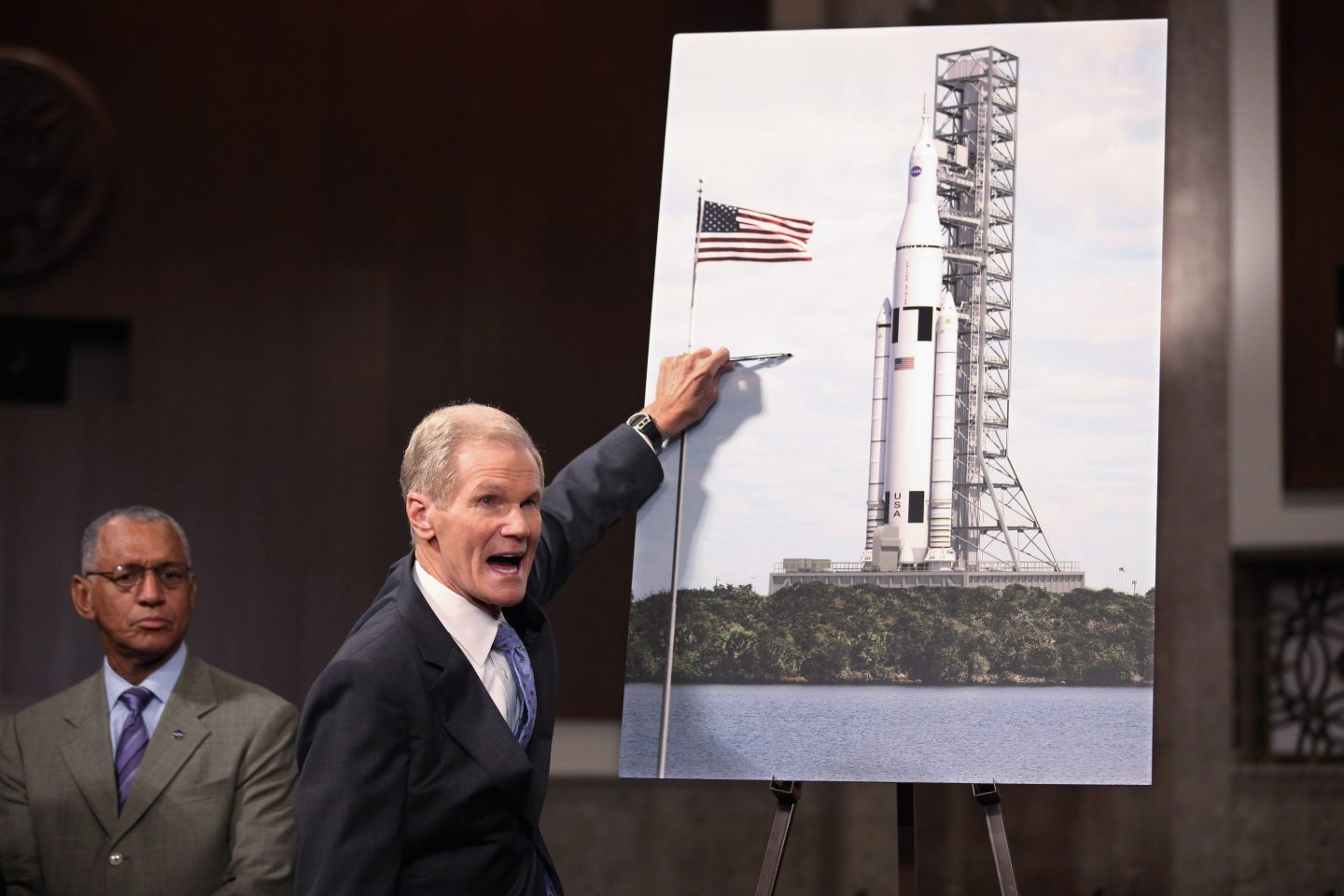It was a mess. Congress did not provide NASA the funding it needed, and the rocket and spacecraft programs quickly ran behind schedule. At one point, to pay for surging Constellation costs, NASA absurdly mulled canceling the just-completed International Space Station. By the end of the first decade of the 2000s, two things were clear: NASA was going nowhere fast, and the program’s only achievement was to enrich the legacy space contractors.
By early 2010, after spending a year assessing the state of play, the Obama administration sought to cancel Constellation. It ran into serious congressional pushback, powered by lobbying from Boeing, Lockheed Martin, Northrop Grumman, and other key legacy contractors.
The Space Launch System was created as part of a political compromise between Sen. Bill Nelson (D-Fla.) and senators from Alabama and Texas.
Credit:
Chip Somodevilla/Getty Images
The Obama White House wanted to cancel both the rocket and the spacecraft and hold a competition for the private sector to develop a heavy lift vehicle. Their thinking: Only with lower-cost access to space could the nation afford to have a sustainable deep space exploration plan. In retrospect, it was the smart idea, but Congress was not having it. In 2011, Congress saved Orion and ordered a slightly modified rocket—it would still be based on space shuttle architecture to protect key contractors—that became the Space Launch System.
Then the Obama administration, with its NASA leader Charles Bolden, cast about for something to do with this hardware. They started talking about a “Journey to Mars.” But it was all nonsense. There was never any there there. Essentially, NASA lost a decade, spending billions of dollars a year developing “exploration” systems for humans and talking about fanciful missions to the red planet.
There were critics of this approach, myself included. In 2014, I authored a seven-part series at the Houston Chronicle called Adrift, the title referring to the direction of NASA’s deep space ambitions. The fundamental problem is that NASA, at the direction of Congress, was spending all of its exploration funds developing Orion, the SLS rocket, and ground systems for some future mission. This made the big contractors happy, but their cost-plus contracts gobbled up so much funding that NASA had no money to spend on payloads or things to actually fly on this hardware.
Source link

:max_bytes(150000):strip_icc()/GettyImages-2189946115-cf8e0a671d044e19b6aefb2030fe7e73.jpg)

